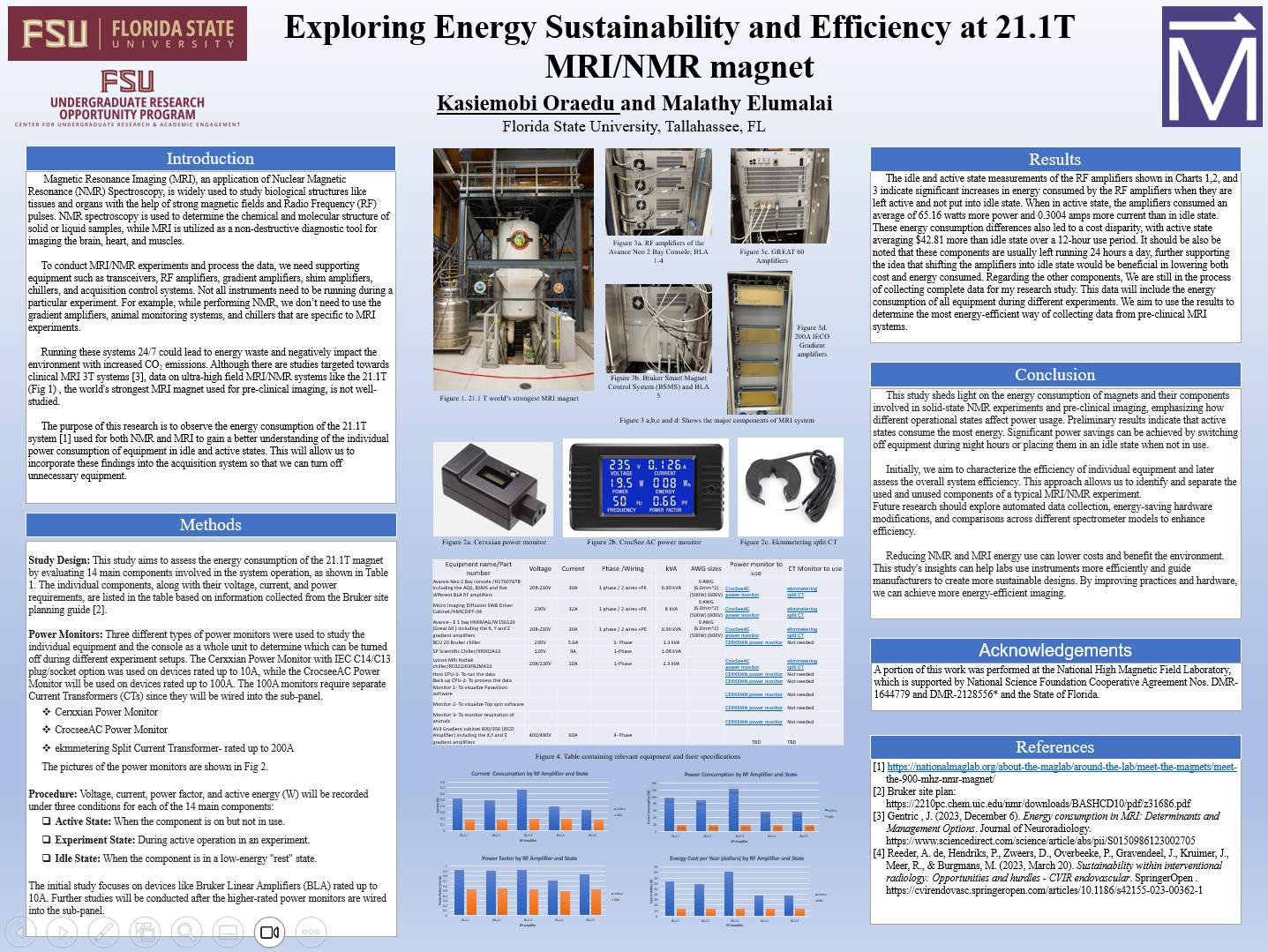Research Symposium
25th annual Undergraduate Research Symposium, April 1, 2025
Kasiemobi Oraedu Poster Session 4: 3:00 pm - 4:00 pm/ Poster #115

BIO
My name is Kasiemobi “Kobi” Oraedu, and I am a sophomore at Florida State University on a pre-med track to become an interventional radiologist. I’m originally from Ocala, Florida, and my passion for medicine stems from a deep interest in diagnostic imaging, minimally invasive procedures, and patient care.
Beyond my coursework, I am actively involved in the Tallahassee Memorial Hospital volunteer program, where I gain valuable hands-on experience in a hospital setting. I am also a member of the American Medical Students Association (AMSA), which allows me to connect with like-minded peers, learn from medical professionals, and prepare for my future in healthcare. Additionally, I am strongly interested in health sciences research and hope to contribute to advancements in medical technology and patient outcomes.
I am committed to building a strong foundation for medical school through academic excellence, clinical experience, and research opportunities. My goal is not just to become a doctor but to make a lasting impact in medicine by improving diagnostic and therapeutic techniques that help patients receive the best possible care.
Exploring Energy Sustainability and Efficiency at 21.1T MRI/NMR magnet
Authors: Kasiemobi Oraedu, Malathy ElumalaiStudent Major: Biological sciences
Mentor: Malathy Elumalai
Mentor's Department: Malathy Elumalai Mentor's College: National High Magnetic Field Laboratory (FSU) Co-Presenters:
Abstract
Magnetic Resonance Imaging (MRI), an application of Nuclear Magnetic Resonance (NMR) Spectroscopy, is widely used to study biological structures like tissues and organs with the help of strong magnetic fields and Radio Frequency (RF) pulses. NMR spectroscopy is used to determine the chemical and molecular structure of solid or liquid samples, while MRI is utilized as a non-destructive diagnostic tool for imaging the brain, heart, and muscles.
To conduct MRI/NMR experiments and process the data, we need supporting equipment such as transceivers, RF amplifiers, gradient amplifiers, shim amplifiers, chillers, and acquisition control systems. Not all instruments need to be running during a particular experiment. For example, while performing NMR, we don’t need to use the gradient amplifiers, animal monitoring systems, and chillers that are specific to MRI experiments.
Running these systems 24/7 could lead to energy waste and negatively impact the environment with increased CO2 emissions. Although there are studies targeted towards clinical MRI 3T systems [3], data on ultra-high field MRI/NMR systems like the 21.1T (Fig 1) , the world's strongest MRI magnet used for pre-clinical imaging, is not well-studied. The purpose of this research is to observe the energy consumption of the 21.1T system [1] used for both NMR and MRI to gain a better understanding of the individual power consumption of equipment in idle and active states. This will allow us to incorporate these findings into the acquisition system so that we can turn off unnecessary equipment.
Keywords: Magnet, NMR, MRI


